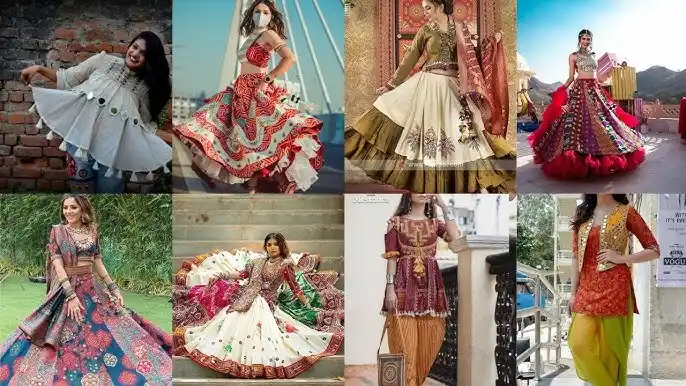Traditional Dress of Gujarat: A Celebration of Culture and Heritage
Gujarat, a vibrant state in western India, is renowned for its rich cultural tapestry, where traditional attire plays a pivotal role. The state’s clothing reflects its history, festivals, and the diverse communities that inhabit it. This article delves into the traditional garments of Gujarat, exploring their significance, variations, and the artistry involved.
Traditional Attire for Men
Kediyu: The Festive Upper Garment
The Kediyu is a distinctive upper garment worn by Gujarati men, especially during festivals like Navratri. Characterized by its flared design and intricate embroidery, the Kediyu allows ease of movement, making it ideal for dances like Garba and Dandiya.
Chorno: Comfortable Lower Wear
Paired with the Kediyu, the Chorno is a type of cotton pants resembling a stitched dhoti. Its loose fit ensures comfort, suitable for the region’s warm climate.
Phento: The Traditional Turban
Completing the ensemble is the Phento, a turban that signifies respect and is often worn during significant occasions.
Traditional Attire for Women
Chaniya Choli: The Quintessential Ensemble
The Chaniya Choli is a vibrant three-piece attire comprising:
- Chaniyo: A flared skirt adorned with mirror work and embroidery.
- Choli: A fitted blouse, often intricately designed.
- Odhni: A dupatta that complements the outfit, draped gracefully.
This attire is especially prominent during festivals and dances.
Saree: Elegance in Draping
Gujarati women also wear sarees, draped uniquely with the pallu (end piece) brought to the front over the right shoulder, showcasing the intricate designs.
Bridal Attire: Panetar and Gharchola
In Gujarati weddings, brides traditionally wear two sarees:
- Panetar: A white saree with red bandhani patterns, symbolizing purity.
- Gharchola: A red saree with golden checks and bandhani designs, representing marital bliss.
These sarees are often gifted by family members, holding deep sentimental value.
Textile Artistry: Bandhani and Kutch Embroidery
Bandhani: The Tie-Dye Tradition
Bandhani is a tie-dye technique resulting in intricate patterns of dots and motifs. Predominantly in red, yellow, and green hues, Bandhani fabrics are integral to Gujarati attire.
Kutch Embroidery: A Stitch of Heritage
Originating from the Kutch region, this embroidery is characterized by:
- Mirror work
- Intricate patterns
- Vibrant threads
Each piece tells a story, reflecting the artisan’s community and traditions.
Accessories and Jewelry
Gujarati attire is complemented by traditional jewelry:
For Women:
- Necklaces, bangles, nose rings, and earrings
- Mangalsutra: A symbol of marriage
- Silver tribal jewelry: Especially in rural areas
For Men:
- Gold chains and rings
These accessories enhance the overall look, adding a touch of elegance.
Conclusion
The traditional dress of Gujarat is a vivid representation of its rich cultural heritage. From the intricate Bandhani patterns to the elaborate Kutch embroidery, each element showcases the state’s artistic prowess. Embracing these attires not only preserves traditions but also celebrates the diverse communities that make Gujarat unique.
For those interested in experiencing the beauty of Gujarati attire firsthand, consider exploring traditional garments like the Tussar Silk Gujarati Garba Navratri Lehenga Chaniya Choli or the Sclout Women’s Traditional Embroidered Gujarati Kutchi Handicraft Jacket.
What is the Capital of Gujarat
The capital of Gujarat is Gandhinagar, a city located in the north-central part of the state. It serves as the administrative and political center of Gujarat, housing the state government offices and the Gujarat Legislative Assembly. Gandhinagar plays a crucial role in the governance and development of Gujarat, reflecting the state’s progress and modernity.





